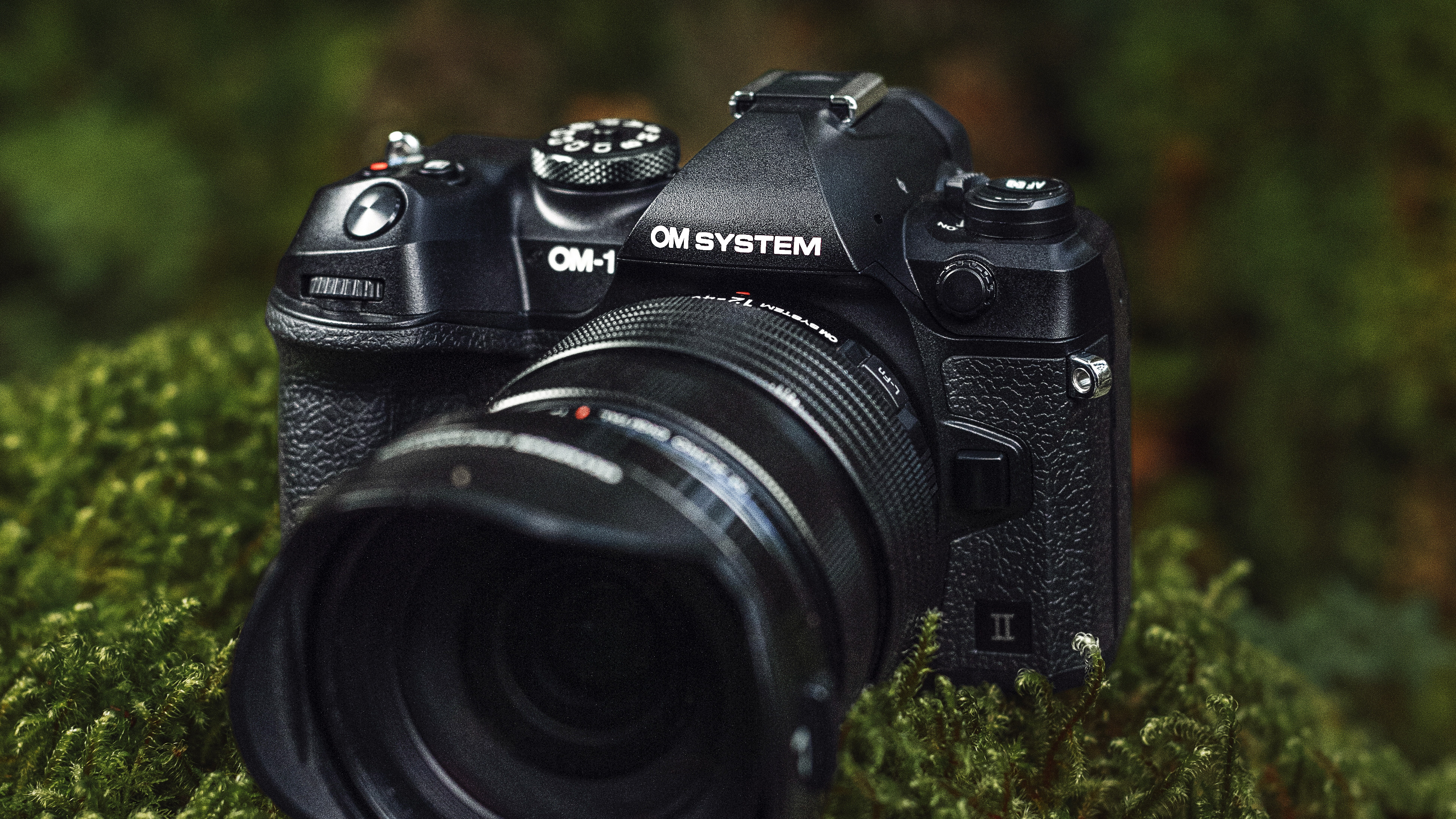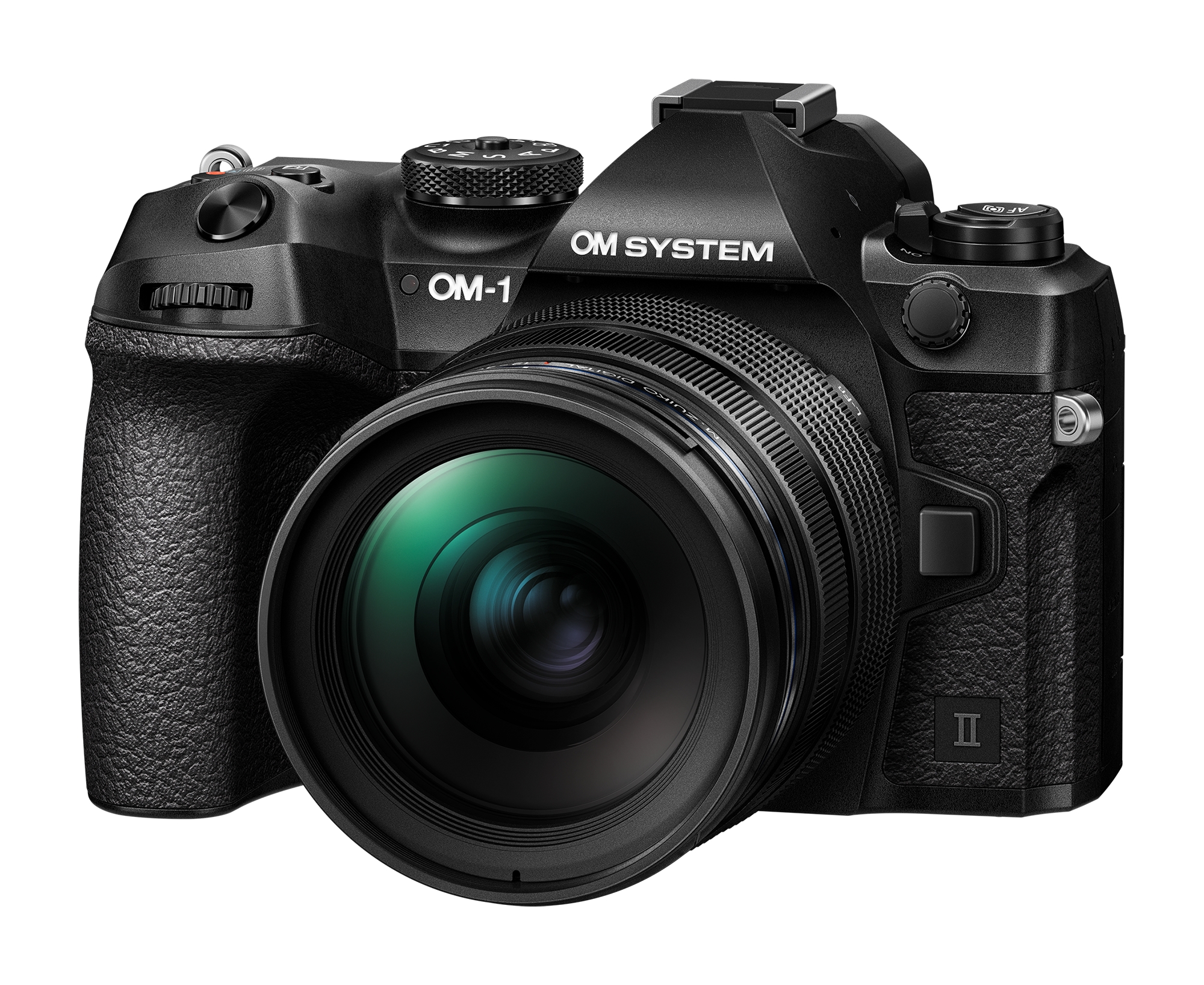OM System OM-1 II is a refresh of one of the world’s best wildlife photography cameras

In our Olympus OM-1 review, we labelled the flagship mirrorless camera for photographers "the best Micro Four Thirds camera you can buy", and said it proved that computational tricks are the future of mirrorless cameras. Almost two years later, it has a successor with a different name etched on its body – the OM System OM-1 II.
Olympus had already been bought by OM Digital Solutions when the OM-1 was launched in March 2022. Since then, there's been little activity from the fledgling name in cameras besides whacking its OM System brand on updated Olympus models that are mere minor refreshes. Sadly, the same is true here.
We have virtually the same OM-1 hardware in the new OM-1 II; a 20MP back-illuminated stacked sensor with 1053-point AF system, 50fps with continuous autofocus and autoexposure, plus the rugged IP53-rated dustproof, splashproof and freezeproof body. Those specs still read well today, but fans of the MFT system would have been hoping for more.
Still, it's a system that's particularly popular with those who don't want to lug around heavy gear or a tripod, and especially with bird and wildlife photographers, for whom some of the new features in the latest model should only serve to improve the shooting experience. The OM-1 series is also leading the way for computational photography in proper cameras, proving they're not just restricted to smartphones.


So if little has changed in the OM-1 II hardware (besides its new rubberized and tactile external controls), what exactly is new? In short, improved algorithms. That might not sound sexy, but the overall performance of the camera has been enhanced, plus there are some new computational tricks on offer.
Most noteworthy is the improved buffer performance – the OM-1 II can shoot for twice as long as the OM-1. If you're maxing the camera out using the 50fps continuous burst mode, you can now shoot sequences up to 256 raw images, with a 5.76m-dot EVF that now has a blackout-free display whatever your shooting rate.
The camera also comes with image stabilization now rated up to 8.5EV, whereas the OM-1 was rated at 7EV. To be clear, the improvement here is algorithm-based and not a newly designed in-body image stabilization system. Nonetheless, we expect class-leading performance, which is exciting especially when pairing the second-gen model with the new M.Zuiko 150-600m F5.0-6.3 IS lens launched on the same day.
Sign up for breaking news, reviews, opinion, top tech deals, and more.
There's also what OM System says is significantly improved autofocus accuracy, through improved AI subject detection algorithms. The OM-1 II can better detect fast-moving birds and keep them in sharp focus. It allows you to select any one of up to eight subjects in crowded scenes, plus human detection AF has now been added to the AI subject detection menu – which is something we asked for in our OM-1 review.
New and improved computational tricks

Of any 'proper' camera, the OM-1 utilizes computational photography tricks the most – it even has a dedicated menu – and the new OM-1 II adds an entirely new feature; LiveGND. In short, it's a world-first graduated filter effect, up to 3EV in strength. In practice, you select the horizon in your shot and apply the graduated filter to darken the brighter half of your shot – usually the sky, with soft, medium or hard gradations and GND2, 4 or 8 strength options.
Ultimately, LiveGND balances your exposure when one half of the shot is much brighter, and is a dream for landscape photographers. LiveGND can't be used in conjunction with LiveND (which by the way now goes up to ND128 – that's equivalent to a 7-stop ND) or Pro Capture modes, but OM System is going a long way to eliminating the need for physical lens filters altogether.
Elsewhere, the High-Res shot mode that can capture 50MP handheld photos of static subjects can now be used with 14-bit raw capture for what OM System says gives 3x the amount of tones, while focus stacking is much quicker and therefore more usable than before. Until we test the new camera, we won't know if the ugly halo effect in this mode, reported in our OM-1 review, has been dealt with.
Currently OM System has no plan to roll out these algorithm improvements to the OM-1 via a firmware update, though that could change in the future. Shipping of the OM System OM-1 II is from mid-February, and it costs $2,399 / £2,199 / AU$3,799 body only. OM System hasn't given people much of a reason to upgrade, but those looking for a new, lightweight and versatile system for wildlife and macro photography in particular have a potentially excellent option here.
You might also like

Tim is the Cameras editor at TechRadar. He has enjoyed more than 15 years in the photo video industry with most of those in the world of tech journalism. During his time as Deputy Technical Editor with Amateur Photographer, as a freelancer and consequently editor at Tech Radar, Tim has developed a deeply technical knowledge and practical experience with cameras, educating others through news, reviews and features. He’s also worked in video production for Studio 44 with clients including Canon, and volunteers his spare time to consult a non-profit, diverse stories team based in Nairobi. Tim is curious, a keen creative, avid footballer and runner, and moderate flat white drinker who has lived in Kenya and believes we have much to enjoy and learn from each other.